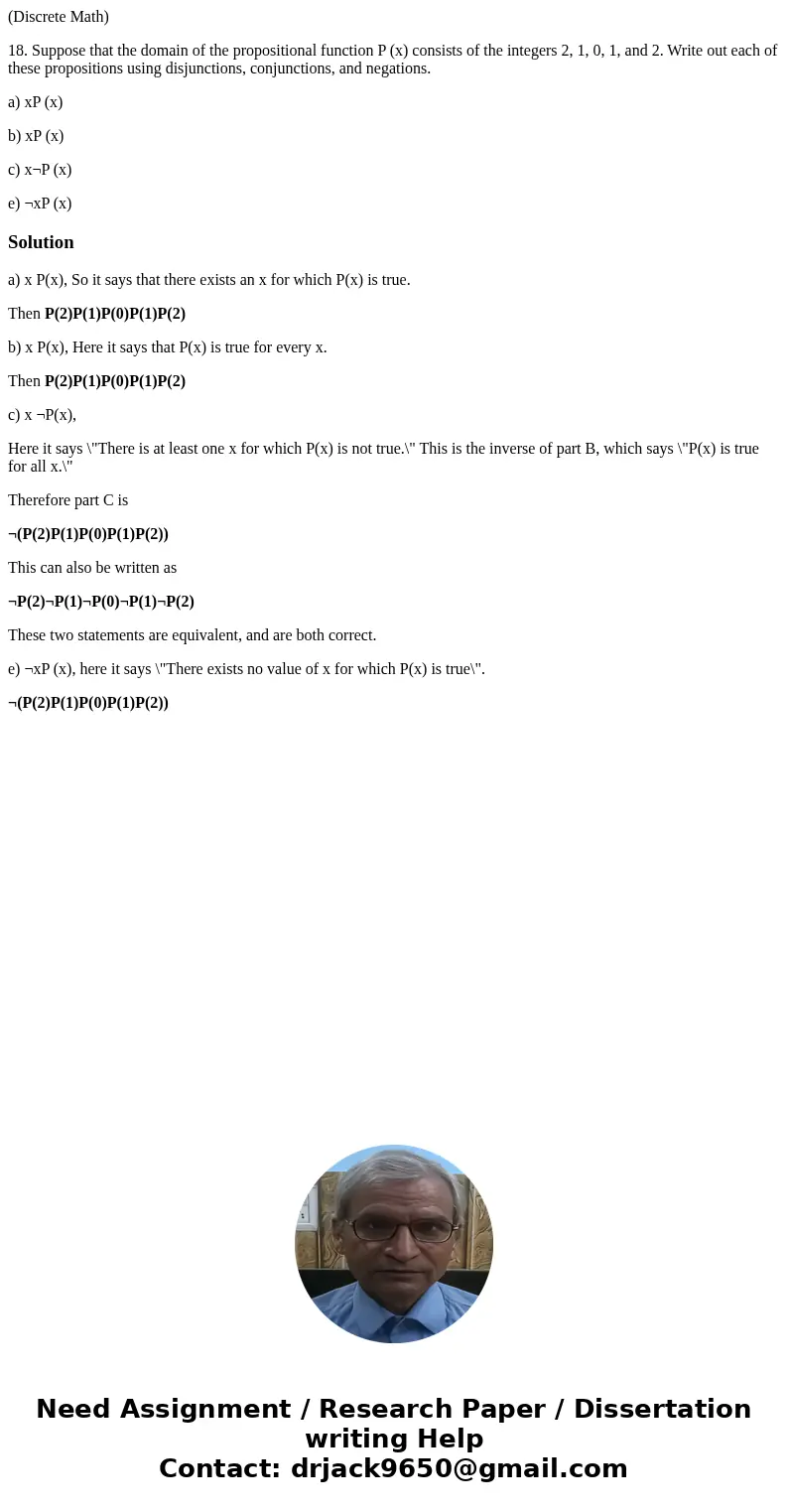Discrete Math 18 Suppose that the domain of the propositiona
(Discrete Math)
18. Suppose that the domain of the propositional function P (x) consists of the integers 2, 1, 0, 1, and 2. Write out each of these propositions using disjunctions, conjunctions, and negations.
a) xP (x)
b) xP (x)
c) x¬P (x)
e) ¬xP (x)
Solution
a) x P(x), So it says that there exists an x for which P(x) is true.
Then P(2)P(1)P(0)P(1)P(2)
b) x P(x), Here it says that P(x) is true for every x.
Then P(2)P(1)P(0)P(1)P(2)
c) x ¬P(x),
Here it says \"There is at least one x for which P(x) is not true.\" This is the inverse of part B, which says \"P(x) is true for all x.\"
Therefore part C is
¬(P(2)P(1)P(0)P(1)P(2))
This can also be written as
¬P(2)¬P(1)¬P(0)¬P(1)¬P(2)
These two statements are equivalent, and are both correct.
e) ¬xP (x), here it says \"There exists no value of x for which P(x) is true\".
¬(P(2)P(1)P(0)P(1)P(2))

 Homework Sourse
Homework Sourse